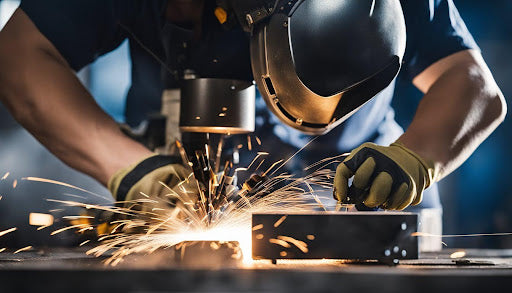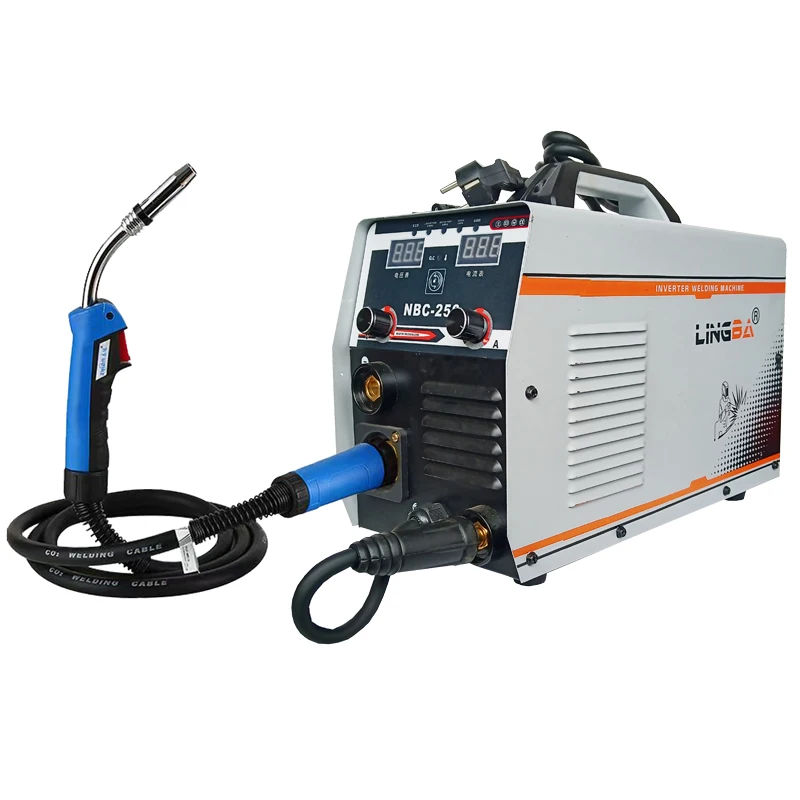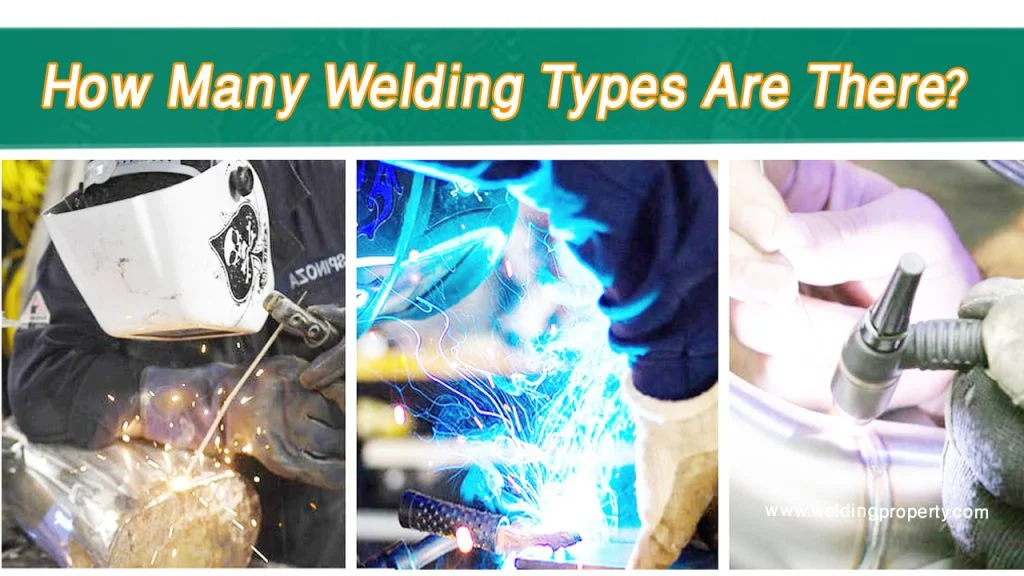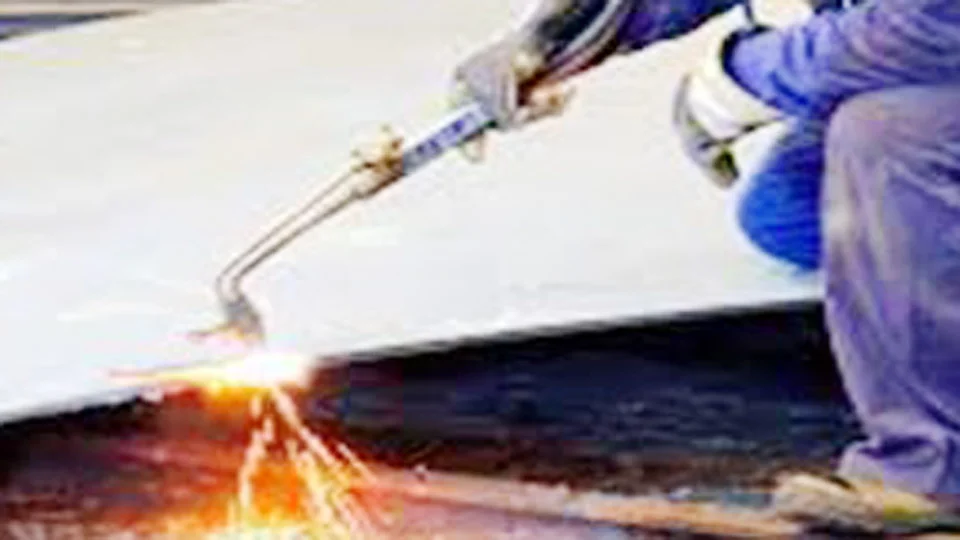Welding machines vary in price based on type and features. On average, they cost between $200 and $3,000.
Are you planning to buy a welding machine? Understanding the cost is crucial. Prices can differ greatly due to many factors. These include the machine’s power, brand, and purpose. Entry-level welders are cheaper. High-end industrial models can be very expensive.
Knowing what you need helps narrow down options. You don’t want to overspend or buy the wrong type. In this guide, we’ll explore the costs of different welding machines. This will help you make an informed decision.

Credit: www.arccaptain.com
Types Of Welding Machines
So, you’re thinking about buying a welding machine? Great choice! But with so many different types, it can be a bit confusing. Don’t worry, we’re here to help you understand the different types of welding machines available. Let’s break it down into simpler terms.
Mig Welders
MIG welders, also known as Metal Inert Gas welders, are among the most popular types. They are easy to use and great for beginners. With a MIG welder, you can weld thin metals like aluminum and thicker materials. It’s almost like using a hot glue gun but for metal!
- Pros: Easy to learn, versatile, fast.
- Cons: More expensive, requires gas.
These welders use a wire as the electrode and require a shielding gas. Think of it as a protective bubble around your work to keep it clean. MIG welders are perfect for home projects, car repairs, and even art!
Tig Welders
TIG welders, or Tungsten Inert Gas welders, are a bit more advanced. They offer precision and control, making them ideal for more delicate and detailed work. Want to weld bike frames or stainless steel furniture? A TIG welder is your go-to.
- Pros: High-quality welds, precise, clean.
- Cons: Steeper learning curve, slower process.
One thing to keep in mind: TIG welding requires both hands – one for the torch and one for the filler rod. It’s like playing a musical instrument, but once you master it, the results are beautiful.
Stick Welders
Stick welders, also known as Shielded Metal Arc Welding (SMAW) machines, are the rugged workhorses of the welding world. These are the machines you see on construction sites welding heavy steel structures.
- Pros: Works well outdoors, affordable, versatile.
- Cons: Slag to clean up, not as neat.
Stick welding is quite forgiving when it comes to dirty or rusty metals. If you’re working in less-than-ideal conditions, this might be your best bet. It’s like the trusty old pickup truck of welders – reliable and strong.
Flux-cored Welders
Flux-cored welders are similar to MIG welders but with a twist. They don’t need an external shielding gas. Instead, they use a special wire with flux inside that creates its own protective bubble.
- Pros: Great for thick materials, can be used outdoors, no gas needed.
- Cons: Produces more smoke, slag to clean up.
If you’re working outside or in windy conditions, a flux-cored welder is a solid choice. It’s like having an all-weather friend who’s always ready to help, come rain or shine.
So, there you have it! These are the main types of welding machines you’ll come across. Each has its own strengths and weaknesses, so think about what you need before making a decision. Happy welding!

Credit: www.alibaba.com
Factors Affecting Cost
When considering the purchase of a welding machine, understanding the factors that influence its cost is crucial. Different elements can significantly sway the price tag. From brand reputation to power output, each factor plays a role in determining the overall expense. Let’s delve into these aspects to help you make an informed decision.
Brand Reputation
Brand reputation is one of the primary factors affecting the cost of a welding machine. Well-known brands often come with a higher price tag due to their proven reliability and quality. Brands like Lincoln Electric and Miller have established themselves in the market. They are trusted by professionals, which can justify their higher prices. Opting for a reputable brand can save you money in the long run due to durability and efficiency.
Power Output
The power output of a welding machine is another critical factor. Machines with higher power output tend to cost more because they can handle more demanding tasks. If you’re working on heavy-duty projects, investing in a machine with higher power might be necessary. However, if you’re only doing light work, a lower power output machine can be a more cost-effective choice.
Material Compatibility
Welding machines are designed to work with specific materials. Some machines are versatile and can weld different types of materials like steel, aluminum, and stainless steel. These versatile machines often come at a premium price. If you primarily work with one type of material, choosing a machine tailored to that material can help you save money.
Portability
Portability is an essential factor, especially for those who need to move their welding machine frequently. Portable welding machines are generally more expensive due to their compact design and lightweight features. However, they offer the convenience of mobility, making them worth the investment if you need to transport your machine regularly.
In conclusion, when buying a welding machine, consider these factors to find a balance between cost and functionality. Making an informed choice can save you money and ensure you get a machine that meets your specific needs.
Budget-friendly Brands
Are you in the market for a welding machine but worried about breaking the bank? Fear not! There are several budget-friendly brands that offer reliable and efficient welding machines. These brands might not cost an arm and a leg, but they do not compromise on quality. Let’s dive into some of the top budget-friendly welding machine brands that can help you get the job done without emptying your wallet.
Lincoln Electric
Lincoln Electric is a well-known name in the welding industry. They offer a range of affordable welding machines that are perfect for beginners and hobbyists. Their products are known for their durability and user-friendly design. For instance, the Lincoln Electric K2185-1 is a popular choice among budget-conscious buyers. It’s a compact, lightweight machine that can handle small projects with ease. Lincoln Electric machines often come with a variety of features that make them a great value for the price.
Hobart
Another reputable brand in the welding world is Hobart. They have been around for decades and have built a reputation for producing high-quality welding machines. Even their budget-friendly models, like the Hobart Handler 140, offer excellent performance. This particular model is known for its versatility, allowing you to work with different materials and thicknesses. Hobart machines are also praised for their ease of use, making them ideal for both beginners and experienced welders looking for a reliable, cost-effective option.
Yeswelder
YesWelder is a relatively new player in the welding industry, but they’ve quickly made a name for themselves with their affordable and high-quality machines. Their products, such as the YesWelder MIG-205DS, offer advanced features at a fraction of the cost of other brands. This model, for example, provides a digital display and dual voltage capabilities, making it a versatile choice for a variety of welding tasks. YesWelder’s commitment to innovation and affordability makes them a great option for budget-conscious welders.
Forney
Forney has been providing welding solutions since 1932, and they have a range of budget-friendly options that do not skimp on quality. The Forney Easy Weld 261 is an excellent example of their commitment to affordability and performance. This machine is lightweight, portable, and easy to use, making it perfect for small projects and DIY enthusiasts. Forney’s reputation for durability and customer support adds extra value to their already cost-effective products.
In conclusion, finding a budget-friendly welding machine doesn’t mean you have to sacrifice quality or performance. Brands like Lincoln Electric, Hobart, YesWelder, and Forney offer a range of affordable options that can meet your welding needs without breaking the bank. So go ahead, pick the one that fits your budget and get ready to spark some creativity in your projects!
Entry-level Welding Machines
So, you’re thinking about stepping into the world of welding but feeling a bit lost about where to start? Well, you’re not alone! Many beginners face the same dilemma. But don’t worry, we’re here to shed some light on entry-level welding machines. These machines are perfect for hobbyists, small-scale projects, and those just starting out. They strike a balance between affordability and functionality. Ready to dive in? Let’s break it down!
Key Features
Entry-level welding machines come packed with features designed to make welding accessible and enjoyable for beginners. Here are some of the key features you can expect:
- Ease of Use: Most of these machines are designed with simplicity in mind. They often come with straightforward controls and easy-to-follow instructions.
- Portability: These machines are usually lightweight and compact, making them easy to move around and store.
- Versatility: Many entry-level welders can handle different types of welding such as MIG, TIG, and Stick. This gives you the flexibility to try different techniques.
- Safety Features: Safety is paramount, especially for beginners. Expect features like thermal overload protection and automatic shut-off.
Pros And Cons
Like everything else, entry-level welding machines come with their own set of pros and cons. Let’s break them down:
| Pros | Cons |
|---|---|
|
|
Price Range
Now, let’s talk numbers. How much should you expect to spend on an entry-level welding machine? Generally, these machines are quite affordable. Here’s a rough breakdown:
- Low-End: $100 – $200: You can find some basic models in this range. They’re good for very light tasks and learning the basics.
- Mid-Range: $200 – $400: These machines offer better features and more power. Ideal for small projects and occasional use.
- High-End: $400 – $600: At the top of the entry-level spectrum, these machines offer the best features and performance without breaking the bank.
So, there you have it! Whether you’re tightening your budget or looking to invest a bit more, there’s an entry-level welding machine out there for you. Remember, the key is to find a balance between cost and functionality that suits your needs. Happy welding!
Mid-range Welding Machines
Mid-range welding machines offer a balance of quality and cost. They suit hobbyists and small businesses. These machines provide good performance without breaking the bank. They are usually more advanced than entry-level models.
Key Features
Mid-range welders often have versatile settings. They can handle different materials like steel and aluminum. Many have digital displays for easy adjustments. Duty cycles are often higher, allowing longer welding periods. Safety features like overload protection are common.
Pros And Cons
Pros:
- Good balance of cost and performance
- Versatile for various materials
- Advanced features like digital displays
- Higher duty cycles
Cons:
- More expensive than entry-level models
- Can be complex for beginners
- Heavier and less portable
Price Range
Mid-range welding machines usually cost between $300 and $800. The price depends on the brand and features. More advanced models can reach up to $1,000. These machines are a good investment for serious hobbyists and small businesses.
High-end Welding Machines
When it comes to welding, not all machines are created equal. High-end welding machines stand out in the crowd with their advanced features and superior performance. They are the go-to choice for professionals who need reliable and precise equipment for their projects. But what exactly makes these machines worth the investment? Let’s dive into the details.
Key Features
High-end welding machines come packed with features that make them a cut above the rest. Here are some of the key attributes:
- Advanced Technology: Many high-end models come with features like pulse welding, AC/DC capability, and digital controls for more precise settings.
- Durability: These machines are built to last, often with heavy-duty casings and components that withstand rigorous use.
- Versatility: They can handle a variety of welding processes such as TIG, MIG, Stick, and Flux-cored welding.
- Efficiency: High-end machines often have higher duty cycles, meaning they can weld longer without overheating.
- Ease of Use: Despite their advanced features, many come with user-friendly interfaces and settings.
Pros And Cons
Like anything, high-end welding machines have their upsides and downsides. Here’s a quick look:
| Pros | Cons |
|---|---|
|
|
Price Range
So, how much do these high-end welding machines cost? Well, prices can vary widely based on the brand, features, and capabilities. Here’s a general idea:
- Entry-Level High-End: These machines start around $1,000 and go up to $2,000. They offer a good balance of performance and cost.
- Mid-Range High-End: Expect to pay between $2,000 and $5,000. These models come with more advanced features and better build quality.
- Top-Tier High-End: The crème de la crème of welding machines can cost upwards of $5,000 and can go as high as $10,000 or more. These are professional-grade machines with the best features and performance.
Choosing the right high-end welding machine depends on your specific needs and budget. Whether you’re a seasoned welder or just stepping up your game, investing in a high-end model can make a world of difference in your work quality and efficiency. But remember, the best machine for you is one that fits your requirements and helps you achieve your welding goals.
Additional Costs To Consider
So, you’ve got your eyes set on a shiny new welding machine and you’re probably thinking about the price tag. But wait, there’s more to the story! Just like buying a car, the initial cost isn’t the only expense you need to think about. Let’s dive into some additional costs that might surprise you. Here are a few things you’ll want to budget for:
Protective Gear
Welding is a tough job, and it can be dangerous if you’re not properly protected. Safety first, right? You’ll need to invest in some essential protective gear. Here’s a quick rundown:
- Welding Helmet: Prices for a good helmet can range from $50 to $300.
- Gloves: Expect to pay between $10 and $50 for a durable pair.
- Jacket: A flame-resistant jacket can cost around $30 to $100.
Not to mention, you might also need safety glasses and sturdy boots. It adds up quickly, doesn’t it?
Consumables
Now, let’s talk about consumables. These are the items that you’ll use up and need to replace regularly. Here are some common consumables:
- Electrodes: Depending on your welding type, a box of electrodes can cost anywhere from $15 to $100.
- Wire: If you’re using a MIG welder, a spool of wire could set you back $20 to $100.
- Shielding Gas: For MIG or TIG welding, don’t forget the gas! This could cost around $35 to $75 per cylinder refill.
It’s like running a car on fuel – keep these consumables in mind to avoid any unexpected surprises down the road.
Maintenance Supplies
Your welding machine will need some TLC (tender loving care) to keep it running smoothly. Here are some maintenance supplies you might need:
- Cleaning Brushes: For keeping your equipment free from dirt and debris, these can cost about $5 to $20.
- Replacement Parts: Things like nozzles, tips, and liners – you might spend $10 to $50 depending on what needs replacing.
- Lubricants: To keep your machine’s moving parts well-oiled, you might spend another $5 to $15.
Regular maintenance not only extends the life of your machine but also ensures your welds are top-notch.
So, while the welding machine itself might be a significant investment, don’t forget to consider these additional costs. It’s like buying a pet – you need to think about food, vet bills, and all the accessories! Keep these in mind, and you’ll be well-prepared to start your welding journey.
Tips For Finding Deals
Finding a welding machine at a good price can be challenging. Understanding where to look and how to spot deals can save you money. Here are some tips to help you find the best deals on welding machines.
Seasonal Sales
Retailers often offer discounts during certain times of the year. Look for sales around holidays like Black Friday and Cyber Monday. These events often feature significant discounts. End-of-year sales can also provide great savings. Stores clear out inventory to make room for new models.
Used Equipment
Buying used welding machines can be a cost-effective option. Check local classifieds and online forums. Many people sell used equipment in good condition. Look for machines that have been well-maintained. This can give you a reliable machine at a fraction of the cost.
Online Marketplaces
Online marketplaces like eBay and Amazon can offer competitive prices. These platforms often have a wide range of options. You can compare prices and read reviews. Look for sellers with high ratings. This ensures you get a quality product from a trusted source.

Credit: tikweld.com
Frequently Asked Questions
How Expensive Are Welding Machines?
Welding machine prices range from $100 to $10,000. Basic models cost less, while advanced industrial machines are pricier. Prices depend on features and brand.
What Is The Price Of A Welding Machine?
The price of a welding machine typically ranges from $100 to $2,500. Costs vary based on brand, type, and features.
How Much Does A Welder Cost?
A welder typically costs between $150 and $1,500, depending on the type and features. Professional welders may charge $20 to $60 per hour for their services.
What Is The Price Of I Weld Welding Machine?
The price of an I weld welding machine varies by model and features. Typically, it ranges from $200 to $1000.
Conclusion
Choosing the right welding machine is crucial. Prices vary by features and brands. Consider your needs and budget carefully. Quality often means a better investment. Research and compare options. Consult reviews and expert opinions. Make sure to purchase from a reliable source.
Investing in the right machine can enhance your work quality. Happy welding!

